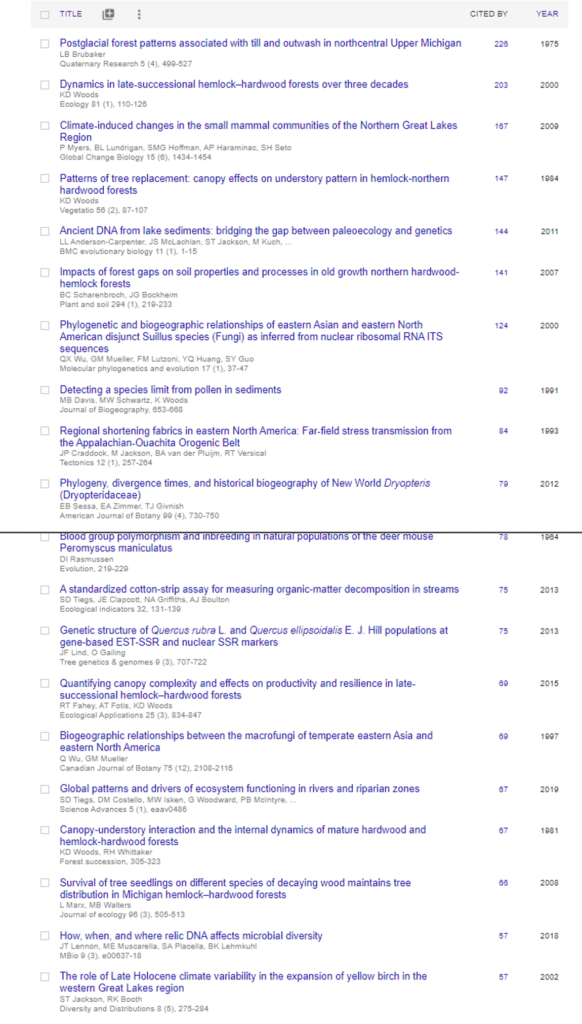Most posts here are about a particular project among those currently or recently active at the Ives Lake Field Station. This one attempts a more over-arching perspective on the overall impact of the Huron Mountain Wildlife Foundation’s 66 years of sponsoring research.
There are many ways of assessing the significance or impact of particular research projects or programs, and they all have shortcomings. However, one common metric is the frequency with which research publications are cited in subsequent publications — citation counts or indices. This approach isn’t perfect. The lasting importance of a piece of research doesn’t always translate directly into numbers of citations. Nonetheless, I made the effort to compile historical rates of citation of papers that derive, at least in part, from HMWF-sponsored research.

This body of work includes about 160 peer-reviewed papers since the Foundation’s founding in 1955 (they’re all listed on this website under the ‘research reports’ tab). I used Google Scholar (scholar.google.com) — a free tool used widely by scholars in all fields to compile citations, and it was able to discover all but a handful of papers.
I had expected a substantial cumulative “citation impact” from HMWF’s historical body of work, but I was surprised by its magnitude. Google Scholar finds over 3800 citations of the papers listed on our publications page. This is an underestimate since Google Scholar did not find some earlier papers, and it has compiled publications relatively fully for only the last 25 years or so.
Google Scholar also compiles a variety of more detailed statistics, including a break-down of citations by year. It’s particularly satisfying to see the rate of citation of HMWF-related research publications climbing steadily over the last decade or so to over 360 in the last full year compiled (2020). Sometimes, citation totals can be heavily influenced by one or a few highly-cited papers, but this doesn’t appear to be the case here. Seven papers have accumulated over 100 citations, and twenty-seven over 50. These are arbitrary thresholds, but 50-plus citations means a paper is having substantial influence in the research community.
It’s important to note that several of the most highly-cited papers are derived from the work of multiple researchers and compilations of multiple data-sets; they are not built solely on HMWF-sponsored research. However, such collaborations are rapidly becoming the norm in science. Drawing upon data from multiple sites is critical in reaching strong conclusions, and the reference ecosystems of the Huron Mountains have provided an important ‘anchor’ in many of these synthetic studies.

